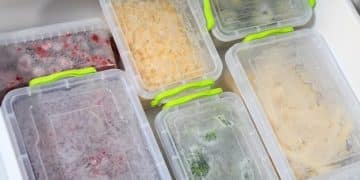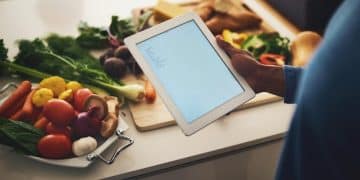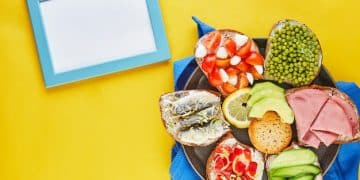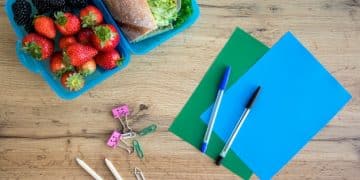Batch Cooking 101: Your Guide to Easy Meal Prep

Batch Cooking 101: A Step-by-Step Guide to Efficient Meal Prep for Busy Americans provides a comprehensive strategy for planning, preparing, and storing meals in advance, saving time and promoting healthy eating habits.
Is your busy lifestyle making it difficult to eat healthy and home-cooked meals? Batch Cooking 101: A Step-by-Step Guide to Efficient Meal Prep for Busy Americans offers a practical solution, enabling you to prepare delicious, nutritious meals in advance, reclaiming your time and promoting well-being.
Why Batch Cooking is a Game Changer
Batch cooking is transforming the way busy Americans approach meal preparation, offering a beacon of hope for those struggling to balance healthy eating with hectic schedules. Embracing this method allows you to consolidate your cooking efforts, creating multiple meals in a single session and freeing up valuable time throughout the week.
The appeal of batch cooking lies in its efficiency and its positive impact on both your health and your budget. By dedicating a few hours to cooking, you can avoid the temptation of unhealthy takeout options and ensure that you have healthy, home-cooked meals readily available.
Time Savings and Efficiency
One of the most significant advantages of batch cooking is the time it saves. Instead of cooking every day, you dedicate a specific time slot – often a weekend afternoon – to prepare multiple meals. This reduces the daily stress of figuring out what to cook and allows you to focus on other priorities.
Healthier Eating Habits
Batch cooking promotes healthier eating habits by giving you control over your ingredients and portion sizes. You can plan your meals around whole foods, limit processed ingredients, and ensure that you’re getting a balanced diet. It also reduces the likelihood of impulsive, unhealthy food choices when you’re short on time.
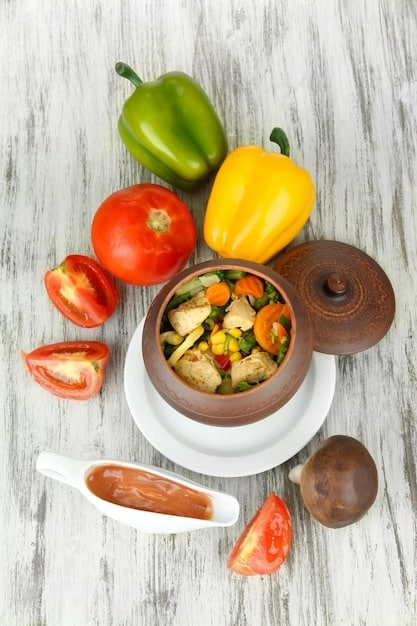
- Plan your meals: Before you start cooking, create a meal plan for the week, including breakfast, lunch, and dinner.
- Shop smart: Make a grocery list based on your meal plan and stick to it. This will prevent impulse buys and ensure you have all the necessary ingredients.
- Prep ingredients: Wash, chop, and measure all your ingredients before you begin cooking. This will streamline the cooking process and save you time.
In conclusion, batch cooking is not just about saving time; it’s about taking control of your diet and improving your overall well-being. By understanding the core benefits and implementing effective strategies, you can transform your approach to meal preparation and enjoy consistent, healthy meals without the daily grind.
Planning Your Batch Cooking Session
Careful planning is crucial for a successful batch cooking session. This involves more than just deciding what to cook; it requires a strategic approach to maximize efficiency and minimize waste. Let’s break down the key steps in planning your batch cooking session.
The objective here is to make informed decisions about your meals, ingredients, and cooking schedule, ensuring you have a clear roadmap before you even turn on the stove.
Choosing Your Recipes
When selecting recipes for batch cooking, consider dishes that can be easily scaled up and stored well. Soups, stews, casseroles, and grain-based bowls are excellent choices. Look for recipes that use similar ingredients to minimize prep time and reduce waste. Also, consider dishes that you and your family enjoy to avoid ending up with leftovers that no one wants to eat.
Creating a Shopping List
Once you’ve chosen your recipes, create a detailed shopping list. Organize your list by grocery store section (produce, meat, dairy, etc.) to make shopping more efficient. Check your pantry and refrigerator before heading to the store to avoid buying duplicates. Consider buying in bulk for ingredients you use frequently, such as rice, beans, or spices.
Scheduling Your Cooking Time
Choose a time when you have a few uninterrupted hours to dedicate to cooking. Many people find that weekend afternoons work best. Before you start, clear your countertops, gather your equipment, and set a timer to remind you to take breaks. Playing some music or listening to a podcast can make the cooking process more enjoyable.
- Take inventory: Before you shop, assess what you already have in your pantry and refrigerator.
- Prioritize recipes: Choose recipes that align with your dietary needs and preferences.
- Be realistic: Don’t try to do too much in one session; start with a manageable number of recipes and gradually increase as you become more experienced.
In conclusion, effective planning sets the stage for a successful and stress-free batch cooking session. By thoughtfully choosing your recipes, creating a detailed shopping list, and scheduling your cooking time, you’ll be well-prepared to create a week’s worth of delicious, home-cooked meals efficiently.
Essential Equipment for Batch Cooking
Having the right equipment can significantly streamline your batch cooking process. While you don’t need to invest in expensive gear, certain tools and containers can make meal preparation, cooking, and storage much more efficient. Let’s explore some essential equipment for batch cooking.
The quality and functionality of your tools directly impact your efficiency and ability to preserve your meals effectively, so investing in the right gear is a worthwhile endeavor.
Cutting Boards and Knives
A set of good-quality cutting boards and knives is essential for efficient vegetable chopping and meat preparation. Invest in a large cutting board that provides ample space for prepping multiple ingredients at once. Sharp knives not only make chopping easier but also reduce the risk of accidents. Consider having separate cutting boards for raw meat and produce to prevent cross-contamination.
Large Pots and Pans
For cooking large quantities of food, you’ll need large pots and pans. A stockpot is ideal for making soups and stews, while a large skillet is perfect for sautéing vegetables or browning meat. Ensure that your pots and pans are made from durable materials and have tight-fitting lids to maintain moisture and heat during cooking.
Storage Containers
Proper storage containers are crucial for keeping your batch-cooked meals fresh and organized. Opt for containers that are airtight, leak-proof, and freezer-safe. Glass containers are a great option, but plastic containers are lighter and more affordable. Label each container with the contents and date of preparation to keep track of your meals.
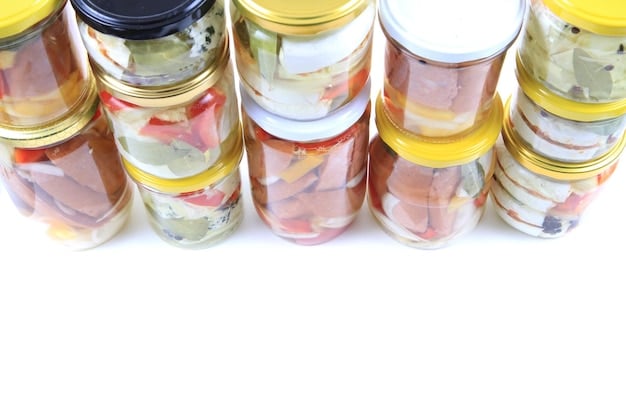
- Food processor: A food processor can speed up chopping and pureeing tasks.
- Slow cooker or Instant Pot: These appliances are ideal for hands-off cooking of soups, stews, and braised dishes.
- Measuring cups and spoons: Accurate measuring is crucial for consistent results.
In conclusion, having the right equipment can make batch cooking easier, faster, and more enjoyable. By investing in a few essential tools, you’ll streamline your meal preparation process and ensure that your batch-cooked meals stay fresh and organized.
Step-by-Step Batch Cooking Guide
Now that you have the essentials in place, it’s time to dive into the step-by-step process of batch cooking. This guide will walk you through each stage, from prepping ingredients to cooking and storing your meals, ensuring you get the most out of your batch cooking session.
By following these steps, you can efficiently create a week’s worth of healthy, delicious meals that fit seamlessly into your busy lifestyle.
Prep Your Ingredients
Before you start cooking, prep all your ingredients. This involves washing, chopping, and measuring everything you need for your recipes. Organize your ingredients into separate bowls or containers to streamline the cooking process. This step is crucial for saving time and preventing last-minute scrambling.
Cook Your Meals
Now it’s time to start cooking your meals. Begin with dishes that take the longest to cook, such as soups, stews, or casseroles. While those dishes are simmering or baking, you can prepare other components, such as grains, roasted vegetables, or grilled chicken. Multitasking is key to efficient batch cooking.
Cool and Store Your Meals
Once your meals are cooked, allow them to cool completely before storing them. This prevents condensation from forming in your containers, which can lead to spoilage. Divide your meals into individual portions and store them in airtight containers in the refrigerator or freezer. Label each container with the contents and date of preparation.
- Prioritize efficiency: Focus on recipes that can be cooked simultaneously or in sequence.
- Monitor cooking times: Use timers and alarms to prevent burning or overcooking.
- Maintain hygiene: Keep your cooking area clean and organized to prevent cross-contamination.
In conclusion, following a step-by-step batch cooking guide ensures that you efficiently prepare and store your meals. By breaking down the process into manageable steps, you can streamline your cooking sessions and enjoy the benefits of having healthy, home-cooked meals readily available.
Tips for Efficient Batch Cooking
While batch cooking is inherently efficient, there are several strategies you can implement to make the process even more streamlined. These tips will help you save time, reduce waste, and maximize the benefits of your batch cooking sessions.
By incorporating these strategies into your routine, you’ll find that batch cooking becomes an indispensable tool for maintaining a healthy lifestyle amidst your busy schedule.
Maximize Oven Space
If you’re baking multiple dishes at once, maximize your oven space by using oven racks or stacking dishes. This allows you to cook more food in a single session, saving time and energy. Ensure that there is adequate airflow around each dish for even cooking. Rotate the dishes halfway through the cooking time to ensure consistent results.
Utilize Leftovers Creatively
Don’t let leftovers go to waste. Incorporate them into new meals or repurpose them into different dishes. For example, leftover roasted chicken can be used in salads, sandwiches, or tacos. Leftover vegetables can be added to soups, stews, or omelets. Get creative with your leftovers to reduce food waste and save money.
Freeze Strategically
Freezing is a great way to extend the shelf life of your batch-cooked meals, but it’s important to do it strategically. Freeze meals in individual portions for easy thawing and reheating. Use freezer-safe containers or bags to prevent freezer burn. Label each container with the contents and date of preparation. Thaw frozen meals in the refrigerator overnight for best results.
- Double recipes: When you find a recipe you love, double it to make even more food in a single session.
- Prep in advance: Wash, chop, and measure ingredients the night before your batch cooking session.
- Clean as you go: Wash dishes and wipe down countertops throughout your cooking session to prevent a buildup of clutter.
In conclusion, implementing efficient batch cooking tips can significantly enhance your meal preparation process. By maximizing oven space, utilizing leftovers creatively, and freezing strategically, you’ll save time, reduce waste, and enjoy the full benefits of batch cooking.
Troubleshooting Common Batch Cooking Challenges
Even with the best planning, batch cooking can present certain challenges. Knowing how to troubleshoot these common issues can save you time, money, and frustration. Let’s address some of the most frequent problems and how to overcome them to ensure successful batch cooking every time.
By understanding these potential pitfalls and having effective strategies, you can navigate any challenges and maintain a smooth, efficient meal preparation routine.
Food Spoilage
One of the biggest concerns with batch cooking is food spoilage. To prevent this, ensure that you’re storing your meals properly in airtight containers in the refrigerator or freezer. Cool your meals completely before storing them to prevent condensation. Consume refrigerated meals within 3-4 days and frozen meals within 2-3 months. If you notice any signs of spoilage, such as a foul odor or unusual texture, discard the food immediately.
Boredom with the Same Meals
Eating the same meals for several days in a row can lead to boredom. To combat this, vary your recipes and ingredients. Try different cuisines, experiment with new spices and herbs, and incorporate a variety of fruits and vegetables into your meals. You can also repurpose your batch-cooked ingredients into different dishes, such as turning leftover roasted chicken into tacos or salads.
Time Management Issues
Batch cooking can take a significant amount of time, especially if you’re new to the process. To manage your time effectively, plan your cooking session in advance, prep your ingredients beforehand, and prioritize recipes that can be cooked simultaneously. Use timers and alarms to stay on track and avoid getting distracted. If you’re short on time, focus on preparing a few key components, such as grains or protein, and supplement with fresh vegetables or salads.
- Improper sealing: Ensure that your containers are properly sealed to prevent freezer burn and spoilage.
- Uneven cooking: Rotate dishes in the oven or adjust cooking times to ensure even cooking.
- Poor planning: Create a detailed meal plan and shopping list to avoid last-minute scrambling.
In conclusion, troubleshooting common batch cooking challenges is essential for maintaining a successful and enjoyable meal preparation routine. By addressing issues such as food spoilage, boredom with the same meals, and time management problems, you can overcome obstacles and continue reaping the benefits of batch cooking.
| Key Point | Brief Description |
|---|---|
| ⏰ Time Savings 👍 | Batch cooking saves significant time by preparing multiple meals in one session. |
| 🍎 Healthier Eating 🥗 | Control ingredients and portion sizes, ensuring a balanced and nutritious diet. |
| 📝 Strategic Planning 🛒 | Careful planning of recipes and shopping lists is crucial for efficient cooking. |
| 🧊 Proper Storage 📦 | Store meals in airtight containers in the refrigerator or freezer to prevent spoilage. |
FAQ
▼
Batch cooking involves preparing multiple meals in advance, typically during a single cooking session, to save time and effort throughout the week. It’s a great strategy for busy individuals and families.
▼
Start by choosing recipes, creating a detailed shopping list, and scheduling your cooking time. Select recipes that can be easily scaled up and stored well. Prioritize dishes your family enjoys to avoid leftovers.
▼
Essential equipment includes cutting boards, sharp knives, large pots and pans, and airtight storage containers. Consider a food processor, slow cooker, or Instant Pot for added convenience and efficiency.
▼
Refrigerated meals should be consumed within 3-4 days, while frozen meals can last for 2-3 months. Always store meals in airtight containers and label them with the contents and date of preparation to ensure freshness.
▼
Vary your recipes and ingredients each week. Experiment with different cuisines, spices, and herbs. Repurpose leftovers into new dishes to add variety, and consider supplementing with fresh sides.
Conclusion
Batch Cooking 101: A Step-by-Step Guide to Efficient Meal Prep for Busy Americans provides a comprehensive roadmap for transforming your approach to meal preparation. By embracing planning, utilizing the right equipment, and implementing efficient cooking strategies, you can save time, eat healthier, and reclaim your well-being.
